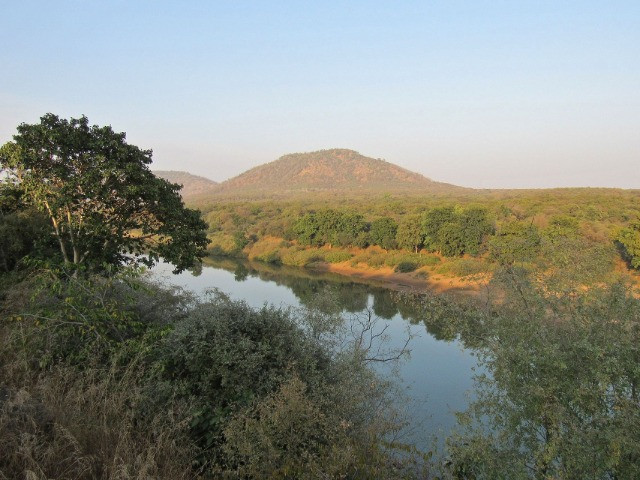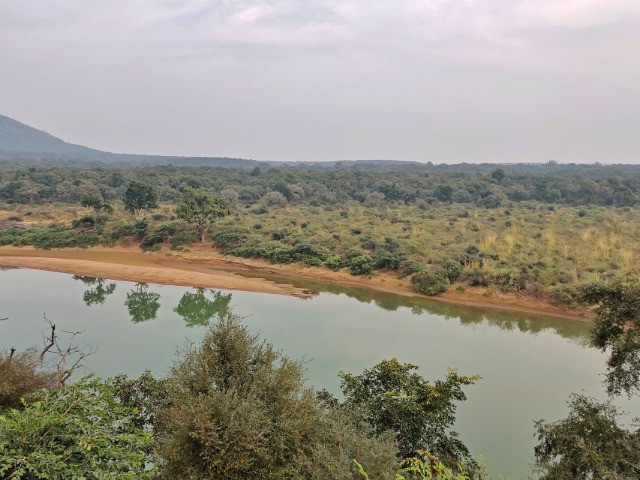Wildlife India@50: Saving the Wild, Securing the Future is an engrossing anthology that celebrates India’s 50-year-long wildlife journey through the eyes and experiences of a diverse set of authors and contributors.
Edited by Manoj Kumar Misra, former member of the Indian Forest Service, Wildlife India@50 has other exceptional contributors such as Suresh Chandra Sharma, H.S. Panwar, Harbhajan Singh Pabla, Arvind Kumar Jha, V.K. Uniyal, Ghazala Shahabuddin and more.
Published by Rupa Publications India Pvt. Ltd., Wildlife India@50 is available for purchase in various bookstores and online. A Kindle version is available too.
This is an excerpt from Wildlife India@50: Saving the Wild, Securing the Future, pp. 201–204.
***
Betrayed Locals and Lions: The Story of Kuno National Park
Faiyaz Ahmad Khudsar
I first went to Kuno in 1999 at the invitation of the then divisional forest officer (DFO), J.S. Chauhan, now the principal chief conservator of forests (PCCF) and the chief wildlife warden (CWLW), Madhya Pradesh. In those days, only one bus plied between Vijaypur, the tehsil headquarters, and the Arrod village, and I then walked almost 7 km on a water-logged and muddy trail to the Agraa village to meet him. Today, as the roads are black-topped, many buses ply between Vijaypur and Agraa and even beyond. During a recent visit, I found it difficult to locate even the police station in Agraa, which at one time was the only visible building on a road, now having many such buildings on both sides of it.
I was in Kuno Wildlife Sanctuary to conduct ecological research and to assist the authorities in its habitat development activities in anticipation of the planned lion reintroduction.
I managed to get a pataur in Sahrana (a designated residential colony of the Saharia tribe) at Agraa. I stayed there for almost two years and learnt about their customs, requirements, lifestyle, food habits, etc. The village was picturesque, with the River Kunwari skirting it. Its catchment, a degraded reserved forest (RF), had been denotified and converted into agricultural and residential plots to rehabilitate villagers from within the sanctuary.
I remember going inside the sanctuary for the first time along with J.S. Chauhan and a team of scientists who had come from the Wildlife Institute of India (WII) for a site visit of villages already relocated and ones still inside the sanctuary.
Why a Second Home
Today, a single population of Asiatic Lion (Panthera leo persica) exists in the world in Gujarat’s Gir National Park. Conservation biology studies suggest that a small population restricted to a single site faces a variety of extinction threats. The real-life example of the Serengeti National Park, Tanzania, where a violent outbreak of canine distemper virus wiped out one-third of its lion population, despite both its population size and area of the protected area (PA) being large, points to threats that cannot be ignored. So, it was essential to realise the Asiatic Lion’s evolutionary potential and promote its genetic vigour to spread the single lion population in Gir National Park into several populations over its historical distribution range.
Historically, the Asiatic Lion was distributed from Palestine in West Asia to Palamau in eastern India. According to available literature, in India itself, the Asiatic Lion was widely distributed from Haryana (ad 1834), Abu (ad 1872), Ahmedabad (ad 1836), Baroda (ad 1832), Rewa (ad 1860), Gwalior (ad 1865), Guna (ad 1872) to Palamau (ad 1814) and many other places. A population and habitat viability analysis (PHVA) workshop for the Asiatic Lion was held at Baroda (Gujarat) in 1993. The participants at the workshop, including those from the forest departments of Gujarat, Uttar Pradesh, Madhya Pradesh, Rajasthan and Haryana, were asked to suggest potentially suitable sites for the reintroduction of the Asiatic Lion. Looking at the former historical distribution range, four wildlife sanctuaries, three in Rajasthan—namely Darrah, Jawahar Sagar and Sita Mata and Kuno in Madhya Pradesh—were shortlisted.
Kuno’s conducive ecology and rich biodiversity, where an area of 344sq.km. had already been notified as Kuno Wildlife Sanctuary in 1981, and it being part of the lion’s historical distribution range, stood out as an alternate home for the Asiatic Lion. In 1994, a field survey conducted by the WII scientists reiterated the suitability of Kuno as the country’s second home for the Asiatic Lion. Subsequently, a separate Kuno Wildlife Division, spread over 1,269sq.km., was created in 2002, with its office at Sheopur, the district headquarters. In 2018, the Kuno Wildlife Sanctuary was upgraded to a national park status, enhancing the area under protection to 748sq.km. and an additional peripheral forest area of 487sq.km. was brought under the unified control of the Kuno wildlife division.
Kuno National Park forms part of the Vindhyan Ranges and is located in the Sheopur district of northwest Madhya Pradesh. It derives its name from the River Kuno, a direct tributary of the River Chambal, which flows from south to north, vertically bisecting the area and remains the lifeline of the national park. Though the River Kuno does not flow throughout the year, it retains water in the form of pools (locally known as deh) throughout its length, including about 44km within the core area of the national park. Some of the important water pools can be seen near Palpur, Paira, Basantpura, Khallai, Barrer and Nayagaon villages.
Kuno is popularly known as Kuno-Palpur owing to a seventeenth-century fort at Palpur, situated on the bank of the River Kuno. It was once the capital of the Palpur jagir under the Scindhia rulers of Gwalior. There exists an old forest rest house (FRH) in Palpur on the high right bank of the River Kuno, which has been a very important and popular destination in the past and even now.
You may also like to read
My Entry and Studies
I had been working at the Kanha National Park with an organisation called Tiger Trust (founded by Kailash Sankhla), where I met J.S. Chauhan sometime in 1997. He had just been transferred to Kuno as the DFO. With a master’s degree in environmental biology from the University of Delhi under the guidance of legendary ecologist Prof. C.R. Babu, I could not resist an invitation from the new Kuno DFO, and I reached Agraa village for the first time in August–September 1999. My visit had been supported by a World Wide Fund for Nature India (WWF-India)-funded project (courtesy my friend Arpan Sharma).
With limited resources, it was not easy to work in a remote area like Kuno; however, my meeting in the year 2000 with the noted wildlife biologist Raghu Chundawat not only helped me receive support from the UK-based Born Free Foundation but also taught me the intricacies of systematic ecological data collection. I have been privileged to receive unstinted support from the Madhya Pradesh forest department and the Kuno National Park management since I started working in Kuno.
Availability of fresh food items and water was a limiting factor at Palpur on account of its remote location. All of us, including the forest officers and staff, consumed the river water after letting it settle overnight. A dip in the river just down the FRH on one shore and a basking mugger crocodile on the other bank was quite common. Even today, a basking mugger crocodile can be seen from the Palpur FRH. Even the gharial is now found and seen in the river.
***





